Once upon a time!
Once you came to Hasf, once you are allowed to stroll around.
You are on a half a day time stay limit, either, morning either evening.
You are strongly, as we are, attached to the epic rock Acropolis,
and you are recommended to have an appointment with "Parthenon".
Hostess Legend Athena is waiting for you anxiously.
The technical identity in brief of "Parthenon". 447 B.C.
- Hostess: Goddess Athena.
- Founder: General and Governor Pericles
- Sculptor: Feidias.
- Architects: Fedias, Ictinos, Kallicrates, Agorakritos, Alkamenis.
- Duration of construction: 447-432 before Jesus Christ.
- Μήκος: 160 μέτρα.
- Υψος: 1 μέτρο.
- 360 ανθρώπινες και θεικές μορφές (λείπουν 60) βλέπε εικόνα. 360 human and god figures.
- Short west or east side: 8 columns
- Long south or north side: 17 bcolumns.
- Material of the walls and columns: White Marble from the mount Penteli.
- East Outside Metope 46 (upper part): Battle of Lapithes and Centaurus (Centauromachy)
- West outside Metope 46 (uper part): Battle of Gods and Giants (Gigantomachy)
- South long side: Battle of Athenians and Amazons (Amazonomachy)
- North long side: Battle of Greeks and Trojans (Trojan War)
- West Pediment: The birth of Goddess Athena and the contest with Poseidon for Athens.
- East Pediment: The Goddess Athena and her birth from the head of Zeus (Dias)
- Main (inside building) freeze relief (zoforos): The Panathenaic procession.
- Inside1: Golden - Ivoire statue of Athena.
- Inside2: The funds of Athens under protection of Athena and security of "Tamies" treasurers during 4 years period (accountants).
Legend for Parthenon: (Source GREECE all the time classic).
- "The Parthenon is an architectural masterpiece of great renown.
- You will appreciate its splendor and its unique temple, dedicated to the goddess Athena, was built of Pentelic marble.
- The architects of the classical temple, which was constructed and decorated from 447-432 BC in the Golden Age of Pericles, were Iktinos and Kallikrates.
- It is a Doric peripteral temple with 8 columns on the front and back and 17 columns on each side.
- In the Parthenon stood the chryselephantine statue of Athena, the work of the famous sculptor Phedias, who was also in charge of the overall construction.
- The statue was the destination of the great procession of the Panathenaea, depicted on the freeze of the temple".
- "The Propylaea adorned with monuments, is the grand entrance of the Acropolis.
- The Propylaea, built by Pericles in 437-432 BC, were the work of the famous Athenian architect Mnesikles.
- They were incorporated in the wall which has been preserved until today and was built during the first half of the 5th century BC, in place of older destroyed Cyclopean wall.
- Before reaching the Propylaea, you will pass through the Beule gate, part of the Roman fortification of the Acropolis".
The temple of Erechtheion: 421-415 B.C. For Athens and Poseidon - Erechtheus.
- East side: Porch of 6 Ionic columns.
- North side: Monumental Propylon.
- South side: Porch of Roof supported by 6 figures of maidens Caryadides.
- Legend for Erechtheion:"Was built from 420-406 BC. at the most holy site of the Acropolis, where goddess Athena planted the olive tree, her sacred symbol. The tree was later destroyed by Persian invaders. According to mythology, following the expulsion of the Persians, the tree miraculously sprouted again".
- Legend for Erechtheus: Για να σωθεί η Αθήνα από τους Θράκες εισβολείς ο Ερεχθέας θυσίασε την κόρη του ως Ιφιγένεια.
- Legend for Erechtheus: Erecheus was killed by Dias with its powerful thunderstorm spear.
- Legend for Caryatides (jeremiad): "The figures of the maidens supporting the roof of the southern balcony of the monument (tomb) devoted to Kekropas are displayed in the Acropolis Museum, while the sixth is displayed in the British Museum".
Tips for Acropolis area: (Source: GREECE IS John Leonard, Asimina Mitrothanasi).
- "The Sacred Rock.. The Place for the histoy-rock in visitors!
- Athena's Parthenon tops the bill, backed up by the Erechtheion, the Propylaia and the stunning little temple of Athena Nike.
- Around the slopes, make sure to see the Theater of Dionyssos, the Sanctuary of Asclepius.
- The Odeion (music hall) of Herodes Atticus and the cave shrines to the ancient Gods.
- On the adjacent Aeropagus, Saint Paul gave one of his most powerful anti-pagan speeches".
- (Source GREECE all the time classic).
- "You will pass through Propylaea before you arrive at the Parthenon.
- The view from the temple of Athena Victory is spectacular. The sight bulge of the columns of the Parthenon gives the impression that they are bending under the weight of the roof.
- The secret of the harmony of the Parthenon is that there is not straight line in the design. Don't be deceived by the optical illusion of the columns, which appear bulge.
- The Erechtheion is a unique temple constructed according to the style of ancient Athens.
- It is constructed on two levels. It is asymmetrical and has two balconies, which are not thematically connected to each other.
- The small balcony on the south side is better known, mainly due to the six Caryatids that support the roof.
- The differences between the sections of the temple may be due to the fact that the various parts are dedicated to various gods.
- The eastern section was dedicated to Athena Palada, and the western to Poseidon Erechtheus".
AFTER THE CONFLICT OF THE
GODDESS ATHENA AND THE GOD POSEIDON
It is well-known that Athens was the most powerful and glorious town of ancient Greece. Its residents managed to develop a wonderful civilization that is admired till today. It is also known that the city got its name from Athena, the goddess of wisdom and courage. But how did Athens got its name? Here is a charming little story about the origin of the citys name.
Once Athena and Poseidon competed which of the two would become patron in a brilliant city of Attica, the Kekropia. They wanted to give it their name and their gifts. The other gods of Olympus promised them that they would do the city prostate him who would give the most useful gift.
All the gods went to Acropolis of Cecrops. There Poseidon struck his trident soil and hitting came a horse. "This is my gift," said God, "is the symbol of military power. This city will dominate the world with the wars that will do on land and sea."
After Athena struck with the spear of the soil and hitting came an olive tree. "This is my gift," said the Goddess "is the symbol of peace and work, this city will dominate the world with peaceful work of civilization"
The gods decided that by the gift of Athena was most helpful and made the town patron. Athena called the city Athens and taught the residents to fight with bravery and wisdom to love the work but mainly to cultivate letters, arts and sciences.
ACROPOLIS - ACROPOLIS ACROPOLIS FROM EVERY WHERE...
Acropolis / Parthenon: one of the most famous monument of the world The mind and the glance of the Visitors of Athens are directed to Acropolis and its most important topic Parthenon. It is admirable that visitors from all over the world the first word will tell when they come to Athens is: Acropolis ..
Acropolis is visible from the roof garden of many hotels, from balconies, from many restaurants, from the Acropolis Museum restaurant. Specially for this area we highlight: On the second floor there is a restaurant with 700 sqm balcony and panoramic views of the Acropolis and other historic hills of Athens ..
Acropolis seen from the radial streets of the city, from pedestrian streets around it, from the historical districts and the large or small squares. When you casually walk between amazing neoclassical and casually newer buildings definitely you will suddenly see Acropolis ..
Acropolis can be seen from historic hills as Hill Areopagus, Muses Hill (Filopappou) Nymphs Hill (Observatory) Pnyx, Lycabettus, Anchesmia Mountains (Tourkovounia) .. Of course no hill can not compete with the beauty of the Acropolis hill absence of sacred jeweleries ! .. all the hills are easily accessible by walking or by car.
Acropolis is visible from its sister city Piraeus which owns the invisible citadel called Castella. The hill has a double value as gains views to the vast mostly southeastern Athens and to the Aegean Sea that spreads before it.
Acropolis is visible from Kallithea and its "unseen" hills. Also can been seen by the Cultural Center Stavros Niarchos Foundation. The Faliron Delta is communicating with both Citadels Athens and Piraeus by "kanopi". The SNFCC is the new gem of Athens which is intended to become the second tourist attraction pole of Athens.
A taste of Acropolis / Parthenon is visible from HOTEL@SYNGROUFIX. The Acropolis / Parthenon is visible from the 6th and 7th floor of the hotel.
On the occasion of talking about Acropolis we want to tell you, that you are welcome in our hotel. The hotel team is ready to welcome you and give you many ideas to complete a nice visit / excursion program in Athens / Attica / Islands / Greece and spend your time better. Please contact reception officer.
ΑΚΡΟΠΟΛΙΣ ΑΚΡΟΠΟΛΙΣ ΑΚΡΟΠΟΛΙΣ ΑΠΟ ΠΑΝΤΟΥ ΟΡΑΤΗ..
Το βλέμμα και το πνεύμα των επισκεπτών της Αθήνας είναι στραμμένο από μακριά ή κοντά γύρω από το ιστορικό κέντρο της Αθήνας, της Αθήνας της Ευρώπης, της Αθήνας του κόσμου. Είναι άξιο θαυμασμού που επισκέπτες από όλα τα μέρη της γης την πρώτη λέξη που θα πούνε για το τι θα δούνε είναι: Ακρόπολη.
Ακρόπολη ορατή από τα roof garden πολλών ξενοδοχείων, από μπαλκόνια, από πολλά εστιατόρια, από το εστιατόριο του Μουσείου της Ακρόπολης. Ειδικά για το χώρο αυτό υπογραμμίζουμε: Στον δεύτερο όροφο λειτουργεί Εστιατόριο με εξώστη 700 τ.μ και πανοραμική θέα στην Ακρόπολη και στους άλλους ιστορικούς λόφους της Αθήνας..
Ακρόπολη ορατή από τους ακτινωτούς δρόμους της πόλης, τους πεζόδρομους γύρω από αυτήν, από τις ιστορικές συνοικίες και μεγάλες ή μικρές πλατείες. Και εκεί που οδηγεί ή περιπατεί κάποιος αμέριμνα ανάμεσα στα καταπληκτικά νεοκλασικά και τα αδιάφορα νεώτερα κτίρια σίγουρα ξαφνικά θα δει από κάποια γωνιά να ξεπροβάλει η Ακρόπολη.
Ακρόπολη ορατή από τους ιστορικούς λόφους όπως Άρειος Πάγος, Λόφος Μουσών (Φιλοπάππου), Λόφος Νυμφών (Αστεροσκοπείου) Πνύκα, Λυκαβηττός, Αγχέσμια όρη (Τουρκοβούνια). Φυσικά κανένας λόφος δεν μπορεί να ανταγωνιστεί το κάλος του λόφου της Ακροπόλεως ελλείψει ιερών κοσμημάτων.. Όλοι οι λόφοι έχουν εύκολη πρόσβαση με τα πόδια ή με αυτοκίνητο.
Ακρόπολη ορατή (!) και από την αδελφή πόλη (Πειραιά) και της δικιά της αόρατη ακρόπολη την ονομαζόμενη Καστέλα. Ο ομώνυμος λόφος έχει διπλή χάρη καθώς κερδίζει θέα από την απέραντη κυρίως νοτιοανατολική Αθήνα και το Αιγαίο που απλώνεται μπροστά του.
Ακρόπολη ορατή και από την Καλλιθέα και τους χαμένους (χτισμένους) λοφίσκους της. Την σκυτάλη παίρνει ο τεχνικός λοφίσκος του Πολιτιστικού Κέντρου Ιδρύματος Σταύρου Νιάρχου στο ιστορικό Δέλτα Φαλήρου που συνομιλεί και με τις δύο Ακροπόλεις Αθηνών και Πειραιά από το "κάνοπι" του. Το ΠΚΙΣΝ αποτελεί το νέο στολίδι των Αθηνών που φιλοδοξεί να γίνει ο δεύτερος τουριστικός πόλος έλξης των Αθηνών.
Απολαύστε την Ακρόπολη από τον 6ο και 7ο όροφο του ξενοδοχείου μας HOTEL@SYNGROUFIX
THE ACROPOLIS OF ATHENS
The following text has been written by I. Trianti (Ministry of Culture of Greece) and serves to general promotional touristic purposes. Photos are taken on 26.07.2015 by Christos Roumeliotis and they are for free copy.
In the middle of the 5th c.BC., when Athens was at the height of its power, the ambitious artistic programme of Perikles was implemented: the Parthenon, the Propylaea and, a little later, the temple of Athena Nike and the Erechtheion, were all erected between 447 and 406 BC, remaining to the present day witnesses to the Greek Classical civilization.
TEXT: I.TRIANTI, from ISBN 978-960-386-103-4







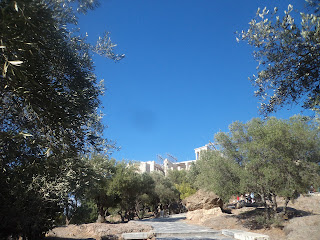








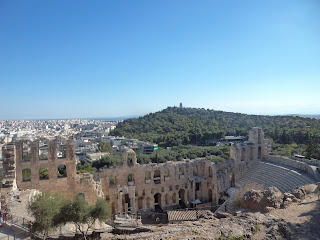




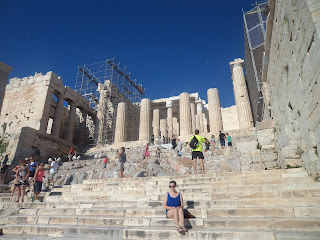














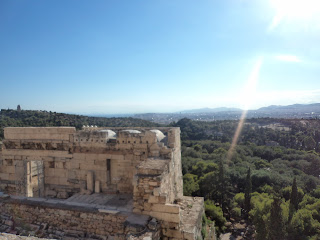






































































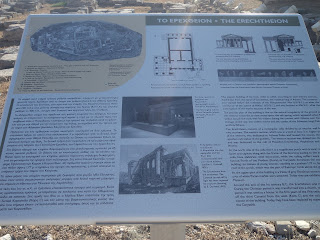






















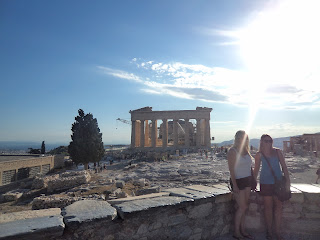



























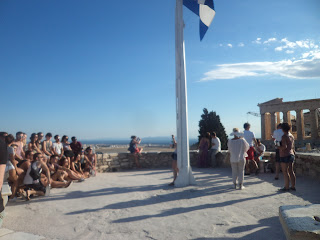






























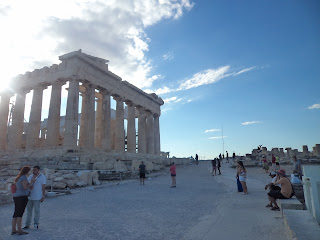






















































































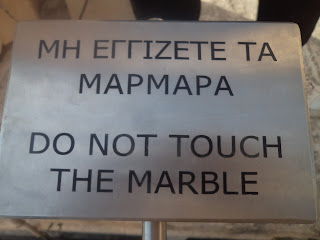






















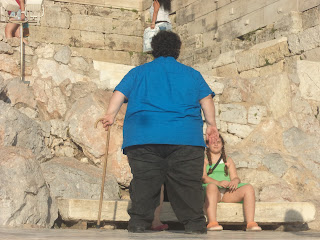





























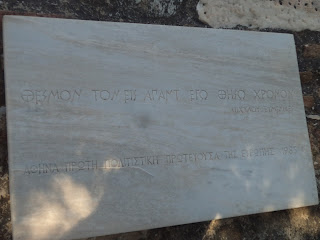
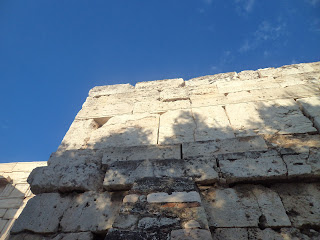



















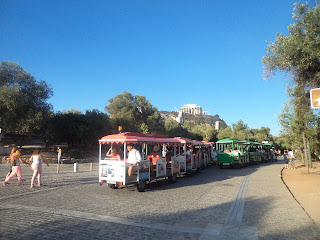

Δεν υπάρχουν σχόλια:
Δημοσίευση σχολίου
Σημείωση: Μόνο ένα μέλος αυτού του ιστολογίου μπορεί να αναρτήσει σχόλιο.